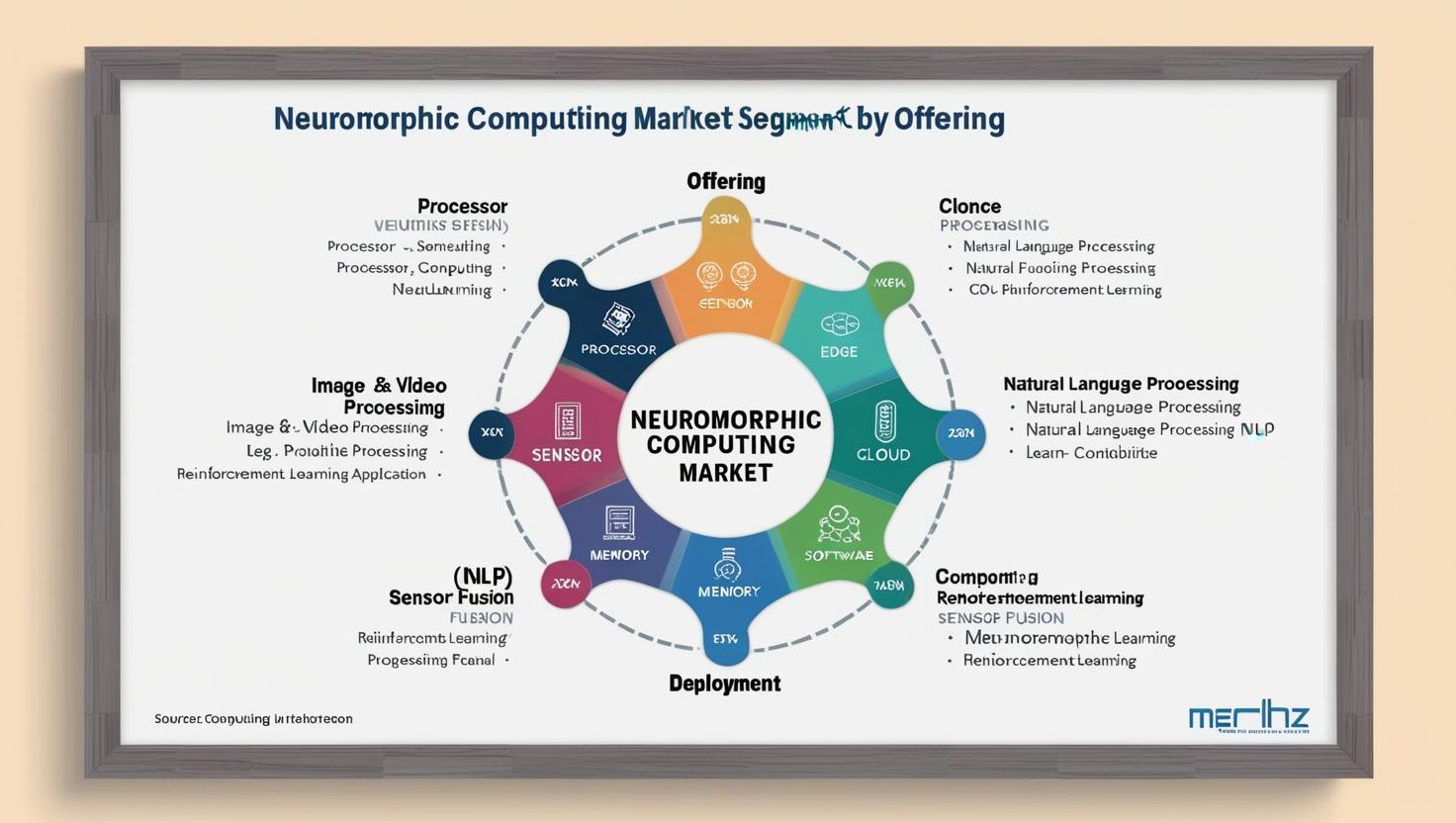As artificial intelligence (AI) continues to evolve and permeate every industry, the demand for more efficient, adaptive, and brain-like computing systems has never been higher. At the forefront of this evolution is neuromorphic computing—a rapidly emerging field that mimics the structure and function of the human brain to deliver ultra-low-power, real-time data processing. With applications ranging from robotics and autonomous vehicles to advanced sensors and edge AI, the global neuromorphic computing market is gaining remarkable momentum, driven by the booming AI hardware ecosystem.
Understanding Neuromorphic Computing
Neuromorphic computing is a form of non-von Neumann architecture inspired by the human brain’s neural structure. Unlike traditional CPUs and GPUs, neuromorphic chips use spiking neural networks (SNNs) to process data asynchronously, similar to the way biological neurons communicate. This enables highly parallel, event-driven computation, which leads to dramatically lower power consumption and faster response times—critical for edge devices and real-time AI applications.
At its core, neuromorphic computing aims to bridge the gap between the performance needs of modern AI and the energy efficiency limitations of today’s conventional hardware.
Market Drivers and Growth Dynamics
The neuromorphic computing industry is expected to grow from USD 28.5 million in 2024 and is estimated to reach USD 1,325.2 million by 2030; it is expected to grow at a Compound Annual Growth Rate (CAGR) of 89.7% from 2024 to 2030.
Firstly, the explosion of edge AI—from smart cameras and drones to wearable devices—is pushing the limits of traditional hardware. Edge applications require real-time processing and ultra-low latency, often in power-constrained environments. Neuromorphic processors, by design, are ideally suited for this role.
Secondly, the growing interest in brain-inspired computing within research labs, government programs, and tech giants is accelerating innovation. Companies such as Intel (with its Loihi chip), IBM, SynSense, and BrainChip have made notable advances, bringing neuromorphic systems closer to commercial viability.
Finally, as AI models become larger and more complex, there is a rising demand for specialized hardware that can handle these workloads more efficiently. Neuromorphic systems offer a promising path forward by enabling continual learning, adaptability, and low-energy inference in dynamic environments.
Download PDF Brochure @
https://www.marketsandmarkets.com/pdfdownloadNew.asp?id=227703024

Key Applications Across Industries
Neuromorphic computing is gaining traction in several high-impact sectors. In autonomous vehicles, neuromorphic chips can process visual, audio, and sensor data in real time to support critical decision-making with minimal power draw—an essential feature for self-driving systems.
In robotics, neuromorphic processors allow machines to perceive and react more like humans, enabling better navigation, obstacle avoidance, and human-robot interaction. For example, robotic arms in factories or service robots in healthcare can operate more efficiently using neuromorphic vision and control systems.
Defense and aerospace agencies are also exploring neuromorphic architectures for tactical edge applications such as surveillance, reconnaissance, and real-time threat detection in remote or harsh environments where power is limited.
Meanwhile, in healthcare, neuromorphic sensors are being integrated into wearable and implantable devices that can continuously monitor physiological signals with minimal battery consumption.
Challenges to Commercialization
Despite its promise, the neuromorphic computing industry still faces hurdles before achieving widespread adoption. One major challenge is the lack of standardized programming tools and development ecosystems. Unlike traditional AI development, building applications for neuromorphic hardware often requires specialized knowledge of spiking neural networks and custom software frameworks.
Moreover, the technology remains relatively nascent, and while research has been extensive, large-scale industrial deployment is still limited. Market awareness and education will play a crucial role in helping organizations understand where neuromorphic solutions fit best and how to integrate them effectively.
Another challenge is benchmarking and comparison—neuromorphic systems perform differently than traditional architectures, making it difficult to compare them using conventional AI performance metrics.
The Road Ahead
Looking ahead, the global neuromorphic computing market is poised to become a critical pillar of next-generation AI infrastructure. As demand for energy-efficient, always-on, and adaptive AI continues to rise, neuromorphic systems are uniquely positioned to meet the needs of edge computing, autonomous systems, and human-centric interfaces.
Investments from both the public and private sectors are increasing, and collaborations between chipmakers, AI researchers, and software developers are helping close the gap between theory and application. With continuing advancements in chip design, algorithm development, and toolkits, neuromorphic computing is no longer a futuristic concept—it is becoming a practical and strategic technology in the evolving AI hardware landscape.
